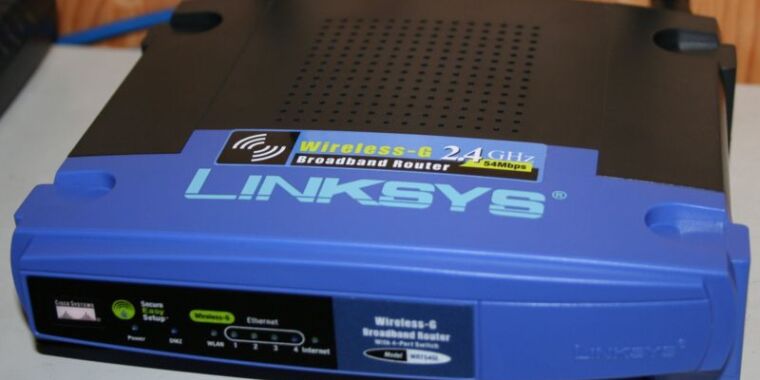
I was the lead engineer on an Openwrt router for 2 years at my old job. Their documentation is complete and utter shit, but their design is extremely intuitive. Whenever I said to myself, “hell, let’s just try this and see if it works,” it had an insanely high success rate.
I didn’t know Lua going into this project, but when I left the company, it made me really wonder why more people don’t use Lua. It’s a really nice language.
I really enjoyed having my own open source router that I could just drop new features into by adding packages and recompiling. I was sad when I had to send all my dev units back.

I pretty successfuly ran a combo of TP-Link with OpenWRT connected with cable to a cheap dumb Edimax, which in turn was connected through wifi to downstairs Zyxel ADSL router from O2 ISP.
Essentially the Edimax bridged the internet (there was only one place where the signal was strong enough) from downstairs, sent it to the TP-Link and that one spread wifi on the upstairs floor (so we could use phones/notebook) and my brother’s and mine desktop PCs were connected to it by cable. A bit of an overcomplicating simple problem, but it worked (otherwise we would either have no wifi or would have to buy a different router with 2 separate WiFi chips).

Countdown until the project ONLY supports its own internal hardware.

Pfsense is that you?! /s

Interesting, though I question why a battery backed RTC is seen as so critically important. Of all the features I can think of wanting in a router, a battery backed RTC doesn’t even begin to make the cut. A device that is powered up 24/7 and connected to the Internet can just get NTP time whenever it boots up and keep time using the OS. What is so necessary about an RTC here? I get that time is used for certificate verification and other security stuff, but again NTP and always powered. Are they concerned that NTP could be an attack vector?
I’m interested in a new OpenWRT router as my WRT1900ACS is getting older and the WiFi driver on it never had amazing support. Right now the Banana Pi R4 looks promising as a WiFi 7 OpenWRT supported router as it looks like most off the shelf WiFi 7 routers do not have OpenWRT support.

Have you ever worked with a computer with modern general-purpose OS like Linux and no RTC? It sucks. It is not strictly necessary, you can live without it, but you need workarounds for basic stuff timestamps in log files or in the file system. At least for a minute until NTP connection is established, but may be longer when internet connection is not available. And when routers are rebooted most often? When troubleshooting broken internet connection. This is also the time when properly timestamped logs could be useful.
And battery backed RTC is cheap. It doesn’t fit on a Raspberry Pi board, but can easily fit into a router case. No excuse for omitting it.

I’ve used Raspberry Pis since the first model came out and other SBCs and the lack of RTC has never really been an issue. The Pi syncs time by the time it makes it to the desktop. I can see it being useful for early boot timestamps but the most useful such log (dmesg) is just elapsed time since power on anyways. I can also see it being useful for devices doing data logging without Internet or regular power supply like a remote sensor logging device. I guess I just don’t see it as a crucial component of a home router. I agree it’s a cheap and useful addition though, just not maybe the most essential of one.

Not all routers are connected to the internet

Because it’s a simple and cheap way to significantly expand a devices capabilities and use cases e.g. cheap offline storage network, or other LAN only services. Or simply to provide your own basic NTP, or backup NTP, as these boards are based off ARM SBCs so perhaps adding 1PPS GPS modules would be possible.

Network time was an attack vector against windows recently. It’s real easy to just not guess what time it is based on devices around you though and knowing what time it is helps you figure out what’s going on.
The real ask isn’t an rtc chip, it’s the battery socket and battery. Theres rtcs baked into all kinds of chips now, they just need something to keep em ticking.

I’ve not had that much of a problem with my WRT1900ACv2, although I quite literally have nothing 802.11ax or newer.

This looks pretty cool. I haven’t used OpenWRT in years. Does it support mesh or adding another access point somehow?
Either way, I’m happy with my current OPNSense/unifi setup.

OpenWrt is a great piece of software. …As is the hackers that get it running on the proprietary hardware.

Interesting idea. I thought they’d have gone for a compute module powered board so that brains are upgradable. It seems they’ve chosen lower cost and built-in WiFi instead.
This is the best summary I could come up with:
To keep the project going, lead developers have proposed creating a “fully upstream supported hardware design,” one that would prevent the need for handling “binary blobs” in modern router hardware and let DIY router enthusiasts forge their own path.
There are two flash chips on the board to allow for both a main loader and a write-protected recovery.
And there’s such an emphasis on a battery-backed RTC because “we believe there are many things a Wi-Fi … device should have on-board by default.”
OpenWrt, which has existed in parallel with the DD-WRT project that sprang from the same firmware moment, powers a number of custom-made routers.
It and other open source router firmware faced an uncertain future in the mid-2010s, when Federal Communications Commission rules, or at least manufacturers’ interpretation of them, made them seem potentially illegal.
In 2020, OpenWrt patched a code-execution exploit due to unencrypted update channels.
The original article contains 472 words, the summary contains 149 words. Saved 68%. I’m a bot and I’m open source!

I just got an onhub router working again thanks to openwrt. Many blessings upon them!

You know, I have this thing just collecting dust in the closet because I wanted to hook up a bunch of Xboxes. I never considered there was something like this going on lol

The original Xbox was what got me into openwrt. I was in college, got a hold of an xbox and wanted to play with my friends online. I could spend $50 or more on the WiFi adapter Microsoft sold, or I could spend like $25 on an Wrt54G and flash it with openwrt, connect that to my WiFi as a wireless bridge and connect the Ethernet to my xbox. Worked like a charm and I had a multipurpose device instead of a single use Xbox WiFi adapter, for cheaper.

I’ll have to look into it!

Awesome, now upstream everything so I can install Debian on the hardware instead of OpenWRT.

